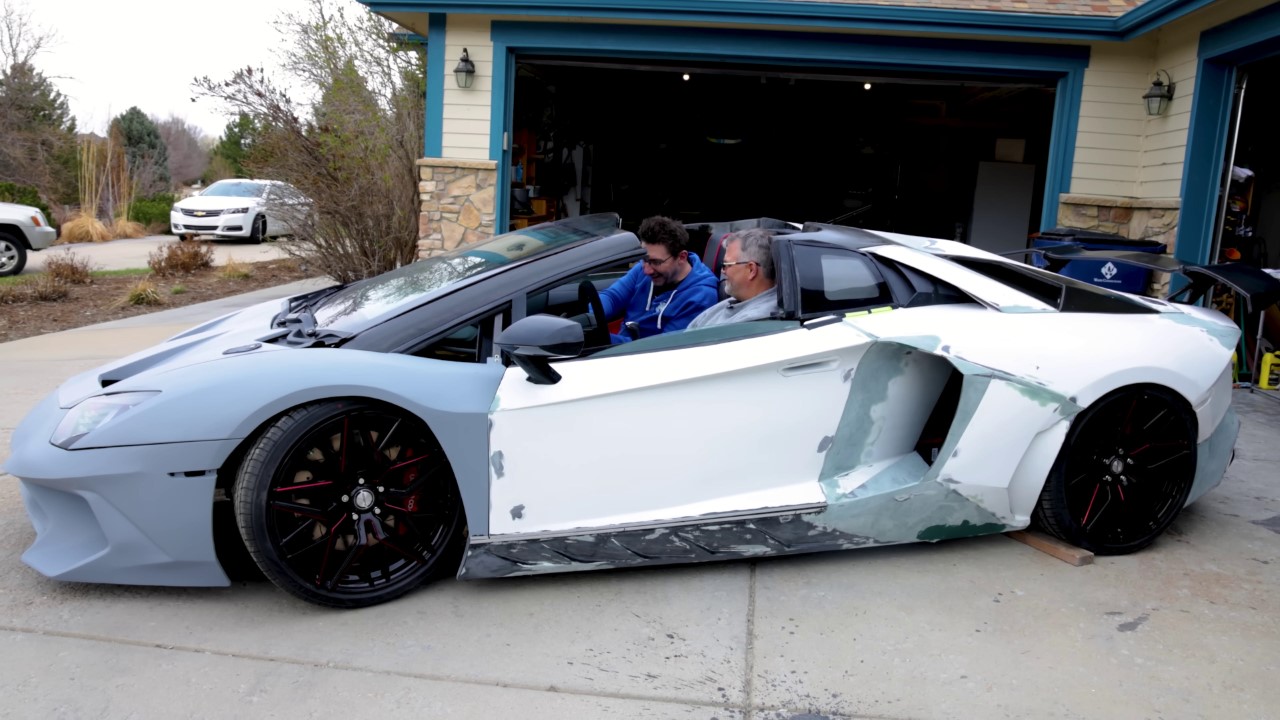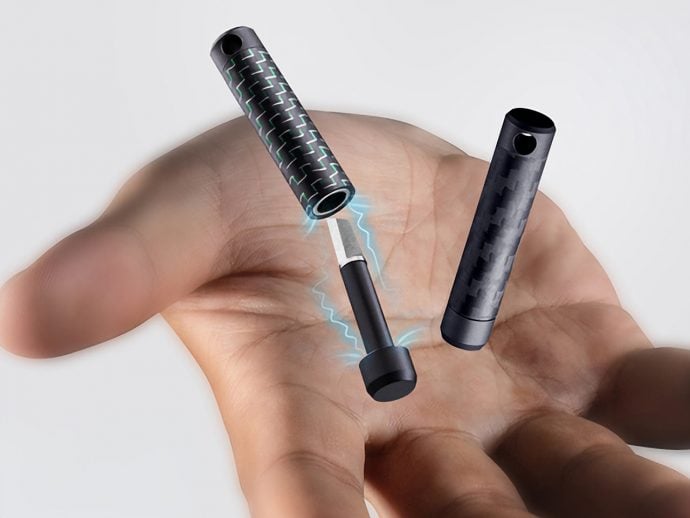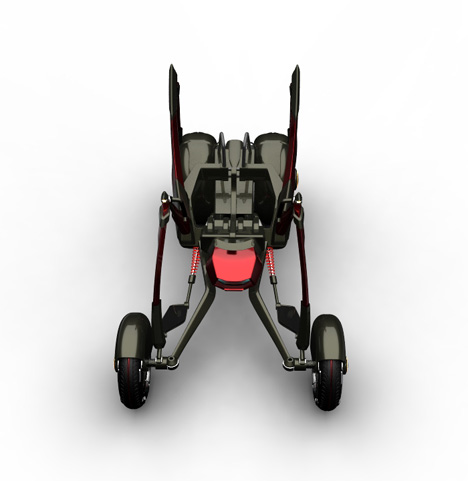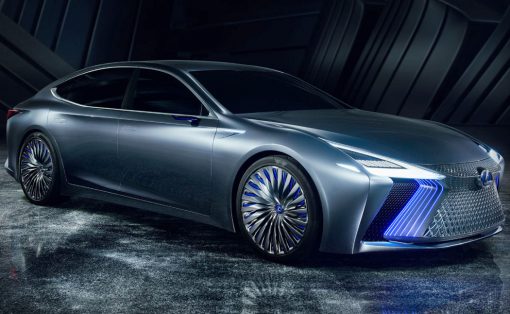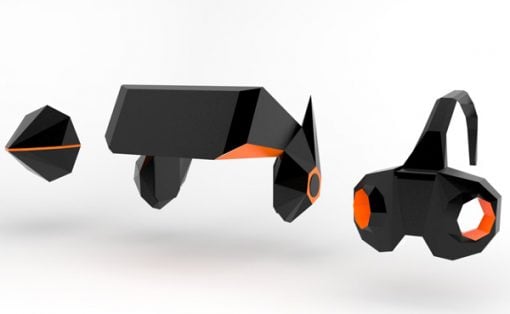It is, in fact, possible to download a car. Sterling Backus, enthusiastic father and physicist, literally downloaded and 3D printed an entire Lamborghini Aventador. Sterling started by first downloading a 1:10 scale model of the Aventador, scaling it up, separating the parts, and even adding a few signature modifications of his own, like making the car’s body wider. The process did take 5 whole years, but the results are so remarkable that even Lamborghini reached out to help in any ways that they could by donating parts like the Aventador’s headlights, which cost a whopping $5,000 a piece, and an original Lamborghini steering wheel, to replace the Audi steering wheel that Sterling had installed previously.
This video comes courtesy 3D Printing Nerd, a YouTuber who interviewed Sterling this month to track his 5-year journey. Sterling hopes to have the Aventador absolutely ready by August, where it’ll be on display at an auto-show.
Designer: Sterling Backus
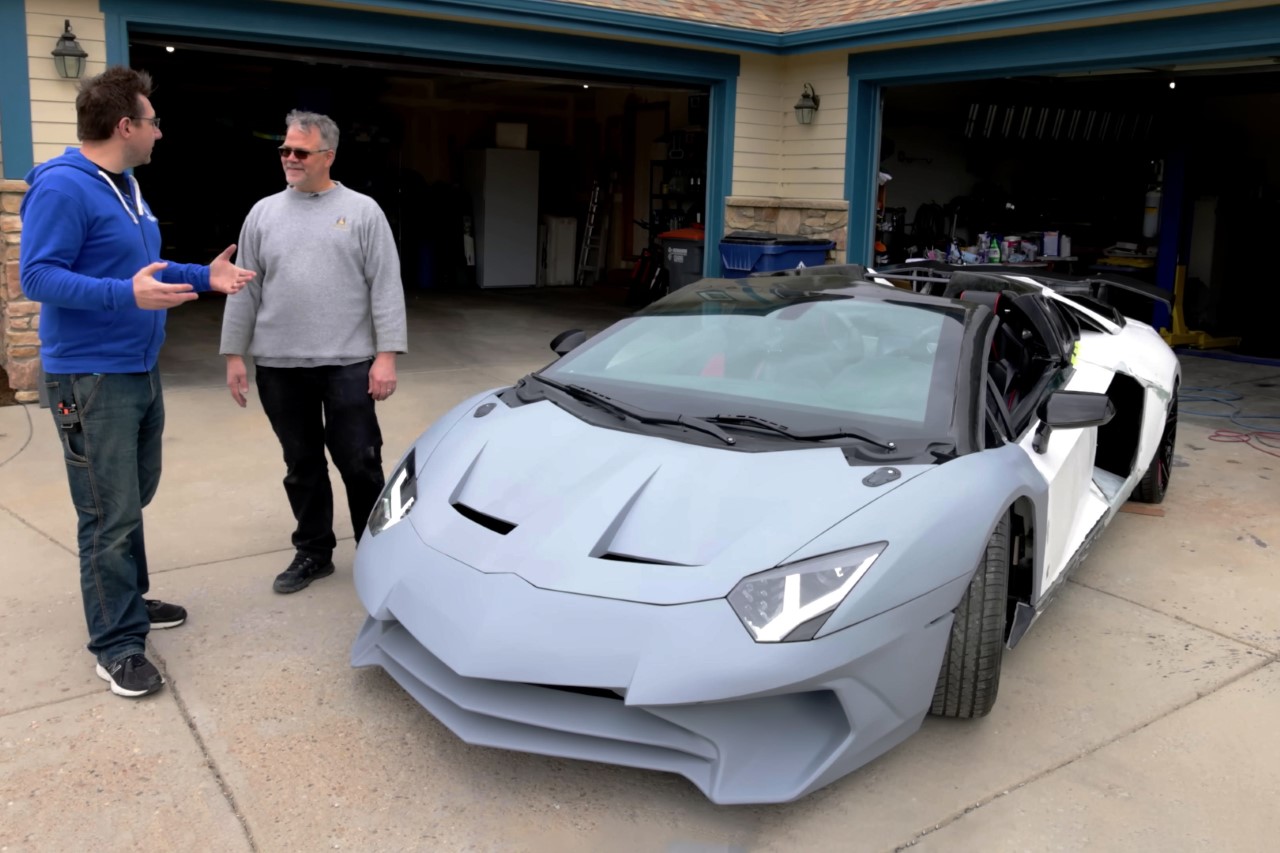
3D printing an entire car sounds somewhat plausible when you’ve got industrial-grade equipment at hand. Sterling had just a Creality Cr 10S, an incredibly bare-basic $350 printer used for hobby projects. To print the car, Sterling split up all the surfaces into small 1 square-foot parts that he printed and glued together using epoxy. Imagine building a car using jigsaw puzzle pieces – that’s pretty much what Sterling did. He pushed the printer to its absolute limit, running it continuously for 15 full months before the printer died on him. Luckily, he managed to print the entire outer body by then. However, there was a small problem…
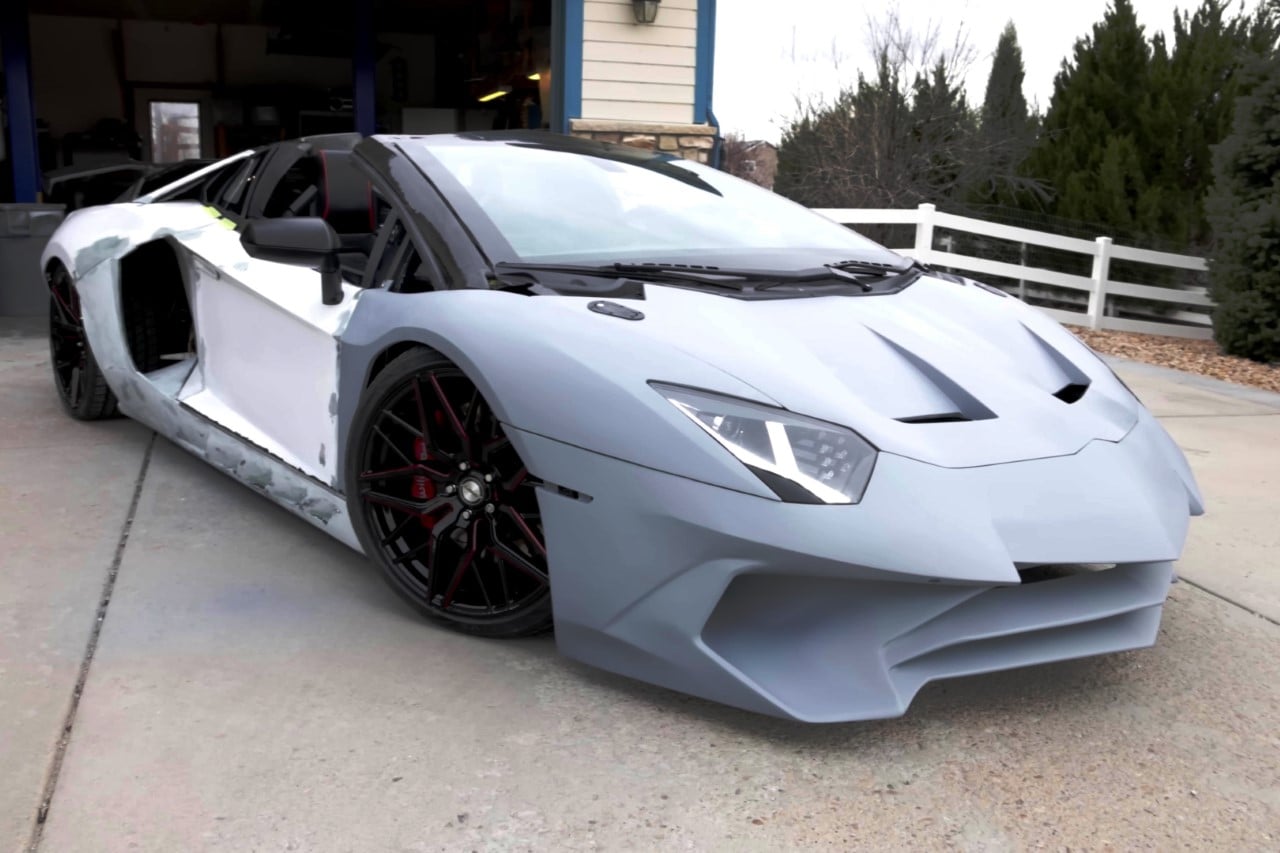
You see, the Cr 10S doesn’t print metal or carbon fiber. It prints with standard PLA filament, which is great for tiny toys… but not so much for large supercars. PLA has a glass transition temperature of 50-60°C (131-140°F), which means at those temperatures, it begins to go soft and start warping. That’s a problem when you’ve got outdoor temperatures that can sometimes touch 50°C and a V12 engine under the hood that definitely crosses those temperatures. To overcome this, Sterling coated each and every surface with 6 layers of carbon fiber sheet (3 on top, and 3 on the bottom), vacuum sealing the carbon fiber onto the panels to ensure there were no warps or bubbles. Once each panel was sandwiched with the carbon fiber, Sterling coated them with automotive primer and got to work sanding each piece to perfection with his son.
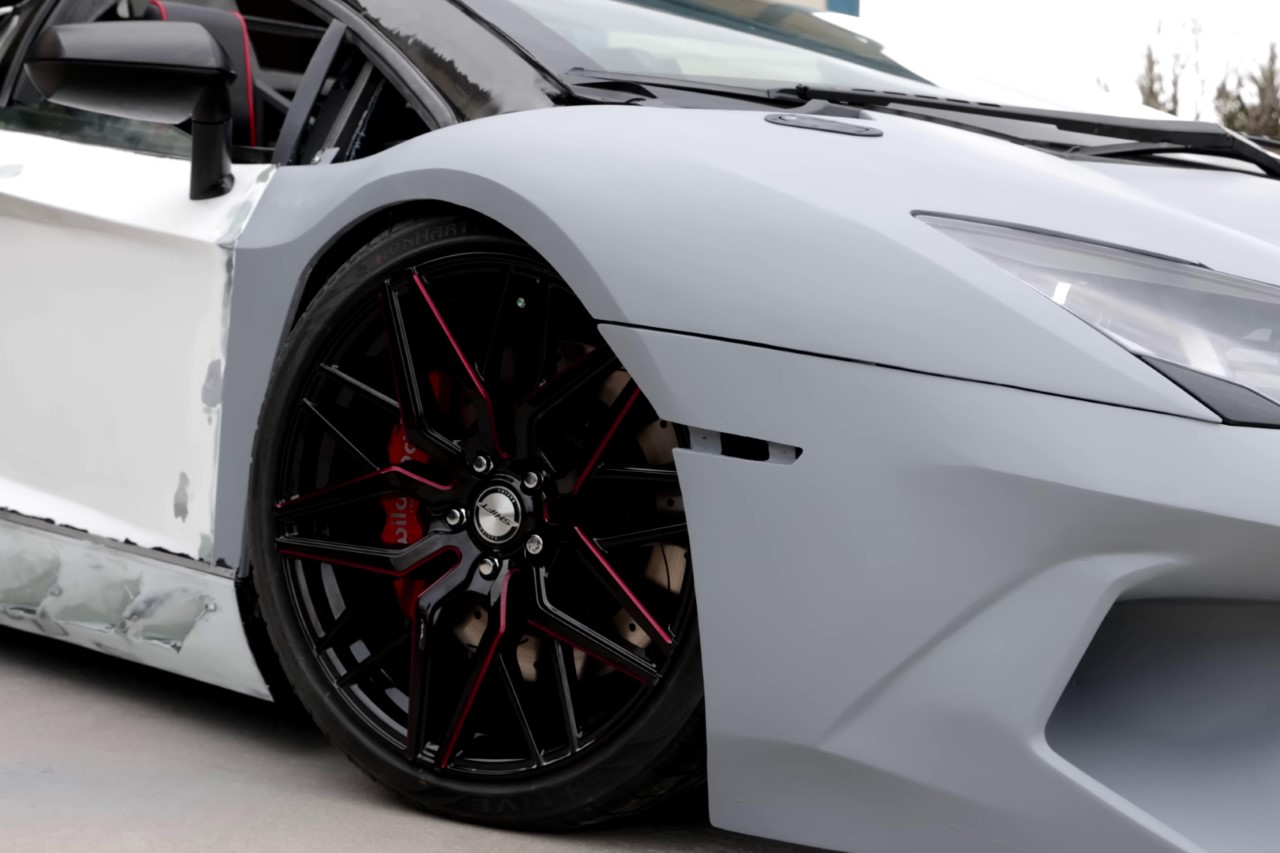
The highlight of the Aventador are those headlights, which apparently cost 5 grand apiece. However, when Sterling began his project, word got to the Lamborghini executives, who decided to give him two original Aventador headlights, sparing in $10K in expenses. The windshield on the original Aventador costs another $4,000, but Sterling made do with a windshield from a Pacifica minivan, which he had trimmed to size. The taillights, however, Sterling printed on his own, given that the wide-body build he was going for would not fit Lamborghini’s stock taillights.
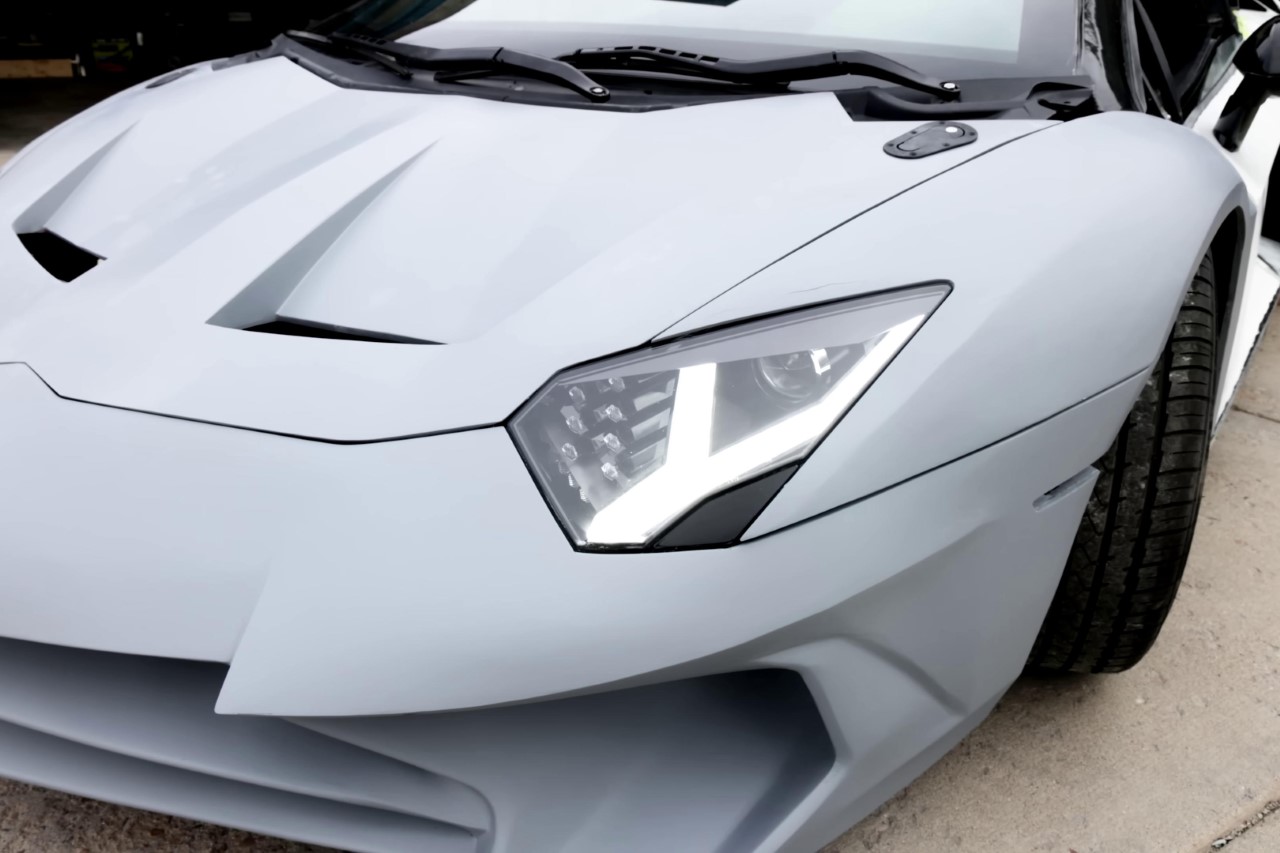
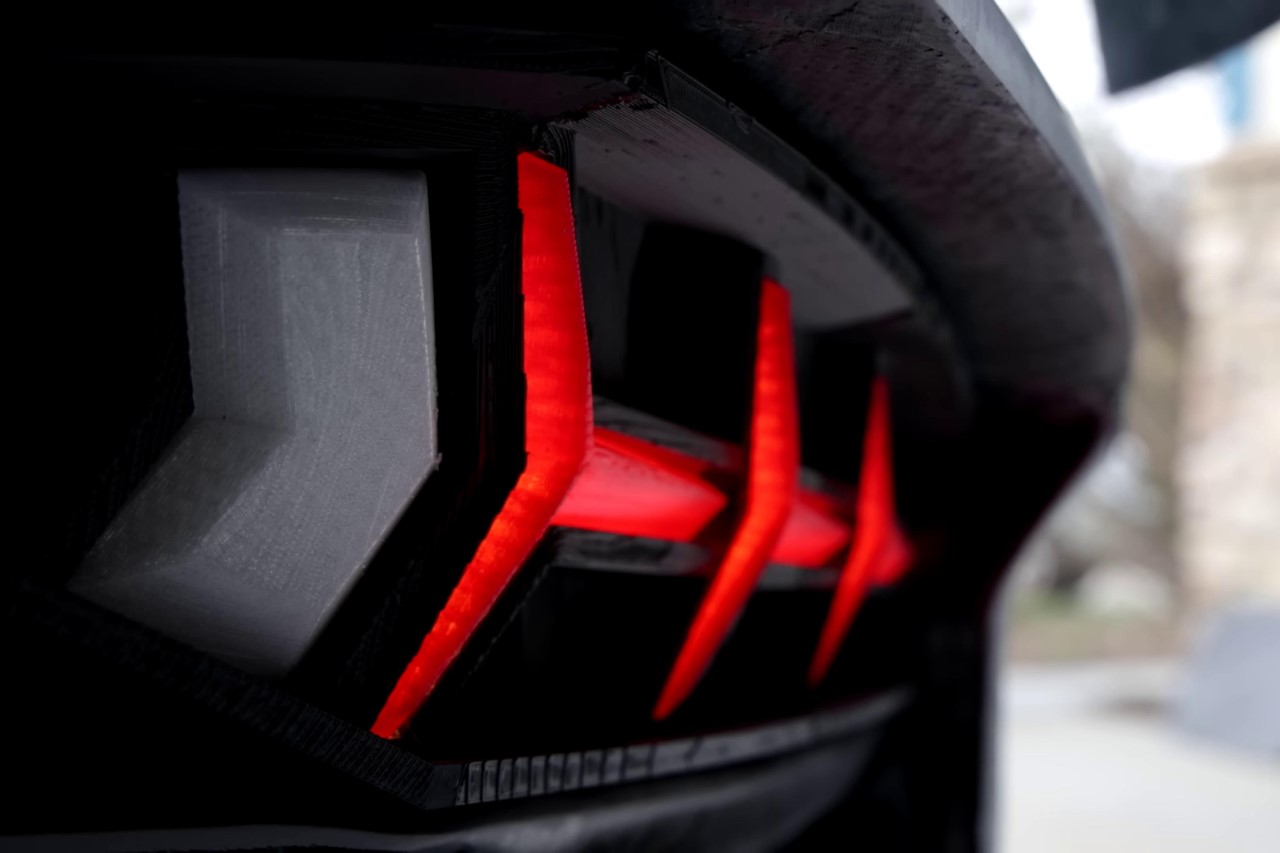
Perhaps the most challenging part of the build was to get the Aventador’s signature scissor doors right. Even as a physicist, it’s something Sterling just couldn’t seem to nail… and Lamborghini’s door hinges cost a thousand dollars apiece. Luckily, Sterling wasn’t the only one 3D printing an Aventador at the same time. Another hobbyist who was building an Aventador of his own had some hinges to spare, which he gave to Sterling.
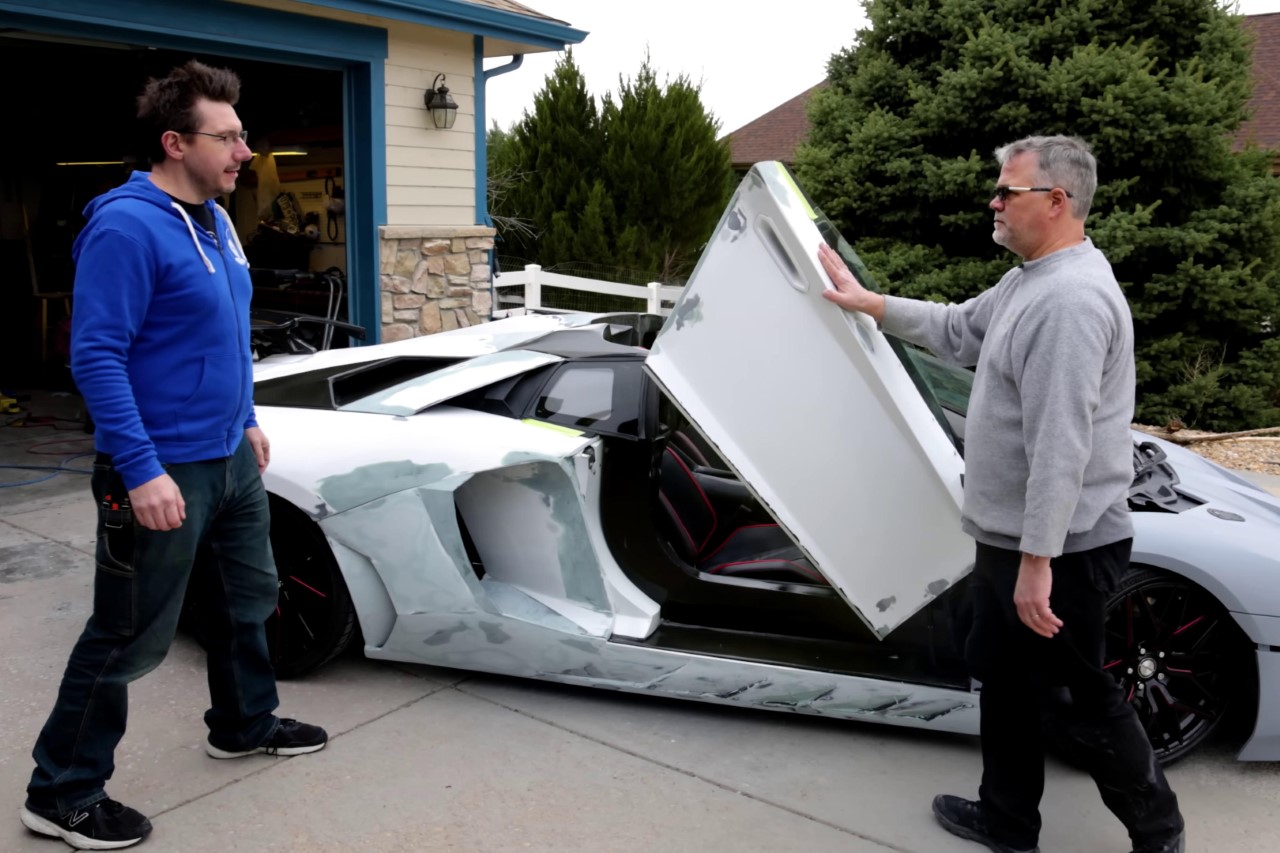
What’s the most impressive fact is that this entire car is built from scratch. Rather than stripping a junk car of its outer fairing and layering an Aventador’s pieces onto it, Sterling built his chassis manually, welding pieces of metal together to bring his car to life. The metal chassis would then hold each individual PLA and carbon fiber piece, creating the car’s aesthetic.
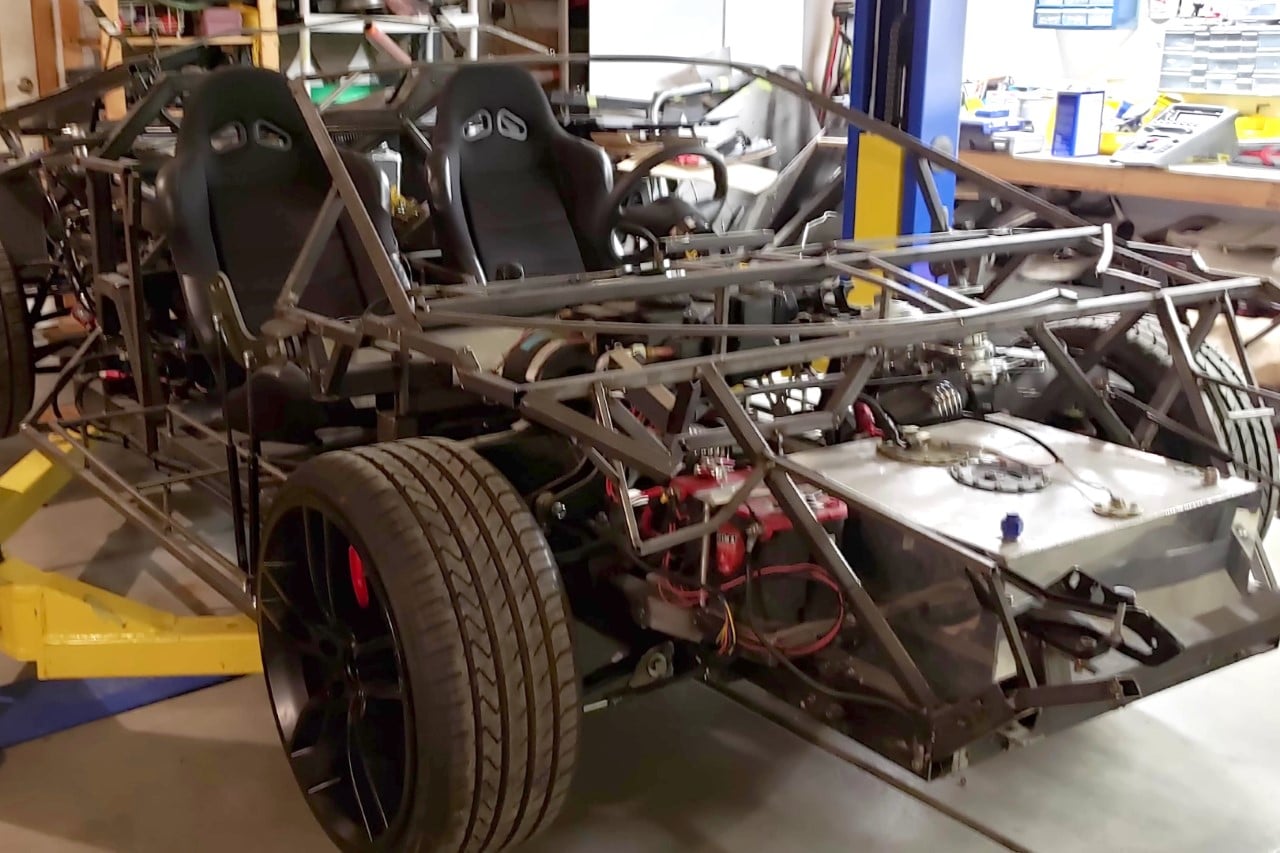
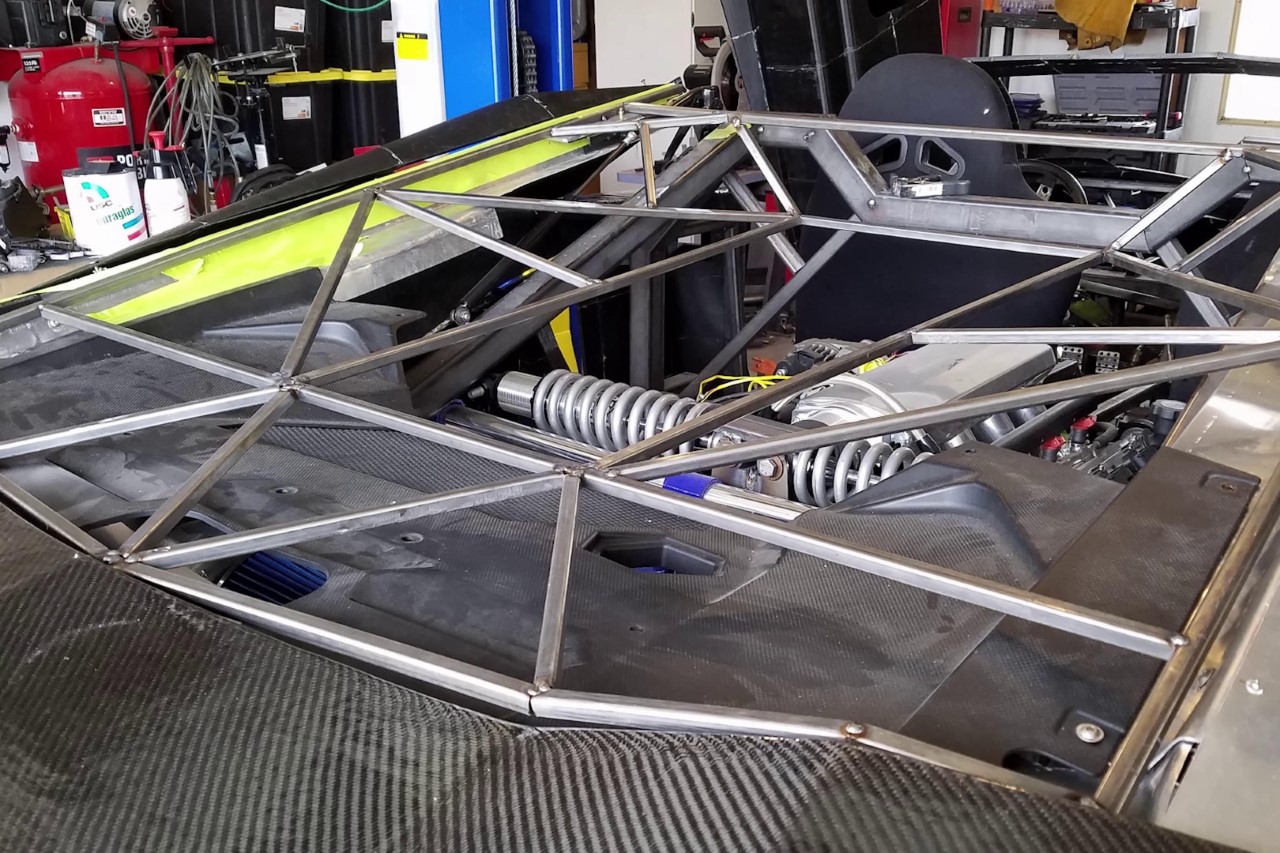
You’re probably wondering what Sterling did for the engine (it isn’t possible to 3D print those yet). Under the Aventador’s (rear) hood isn’t Lamborghini’s signature V12, but instead is an LS1, a V8 manufactured by GM and used in the Corvette. The transmission on the Aventador, funnily enough, isn’t a Lamborghini stock too but rather is taken from a Porsche 911.
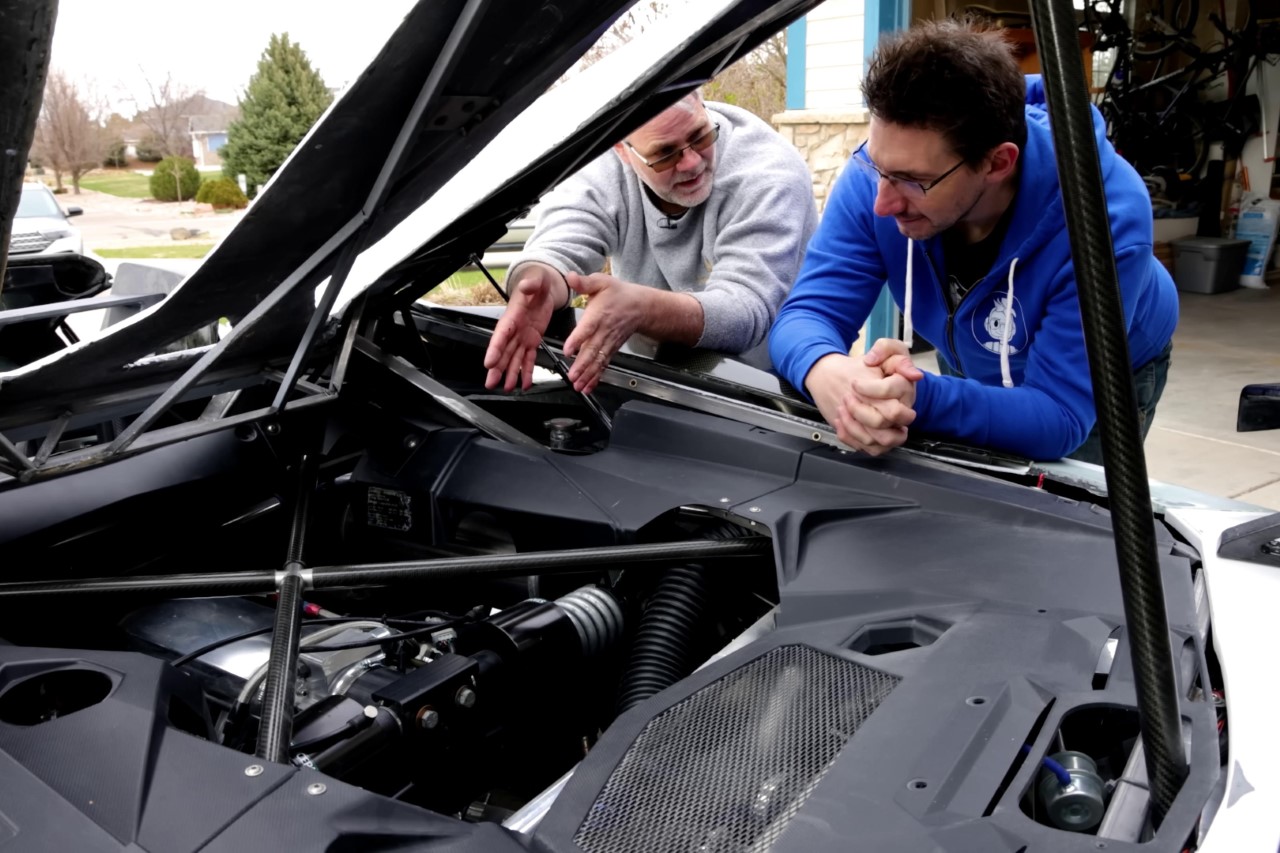
Once Sterling finished finalizing his build (and even making the interiors), Lamborghini’s director of marketing took a look at his progress, only to pop his head in and see an Audi steering wheel fitted into the car’s dash. A lot of Lamborghinis use Audi parts, Sterling mentioned, highlighting that Audi and Lamborghini are owned by the same company, VW. The steering column on the Aventador, for example, is the same one found in Audi cars, so it seemed like a natural pick for Sterling. He didn’t have an Aventador steering wheel, so he decided to stick with the Audi one that fit perfectly into the column – something Lamborghini’s director of marketing didn’t quite approve of. Two weeks later, Sterling found a Lamborghini steering wheel in the mail straight from Italy. The Italians don’t like it when you mess with tradition, whether it’s putting ketchup in your pasta or an Audi steering wheel in your Aventador!
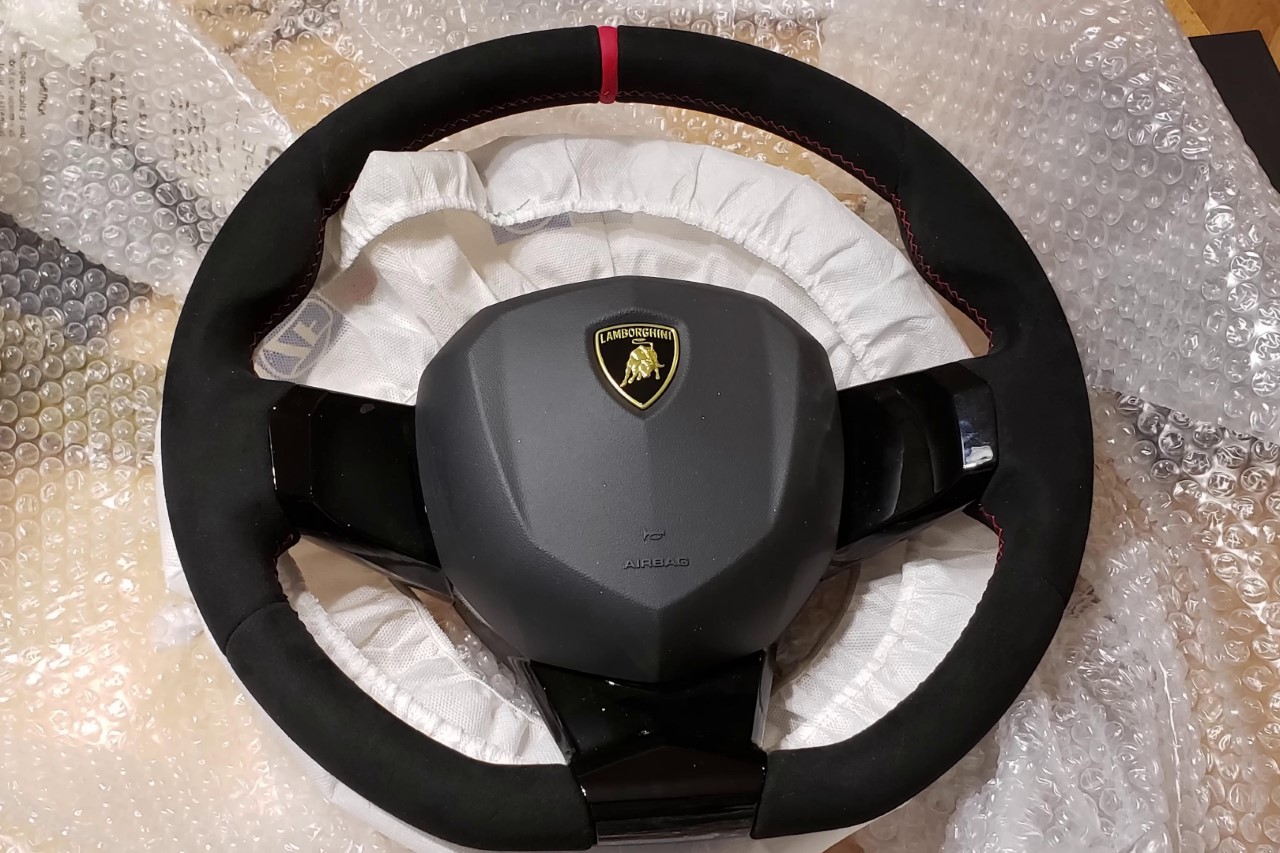
The overall build still needs some work, and Sterling is hoping to give the car a Red, White, and Black paint job once everything’s ready. The 3D-printed Aventador weighs just around 2700 lbs, making it significantly lighter than the original which clocks in at 4000 lbs. For now, Sterling is still working on finishing the car’s exteriors as well as fine-tuning some of the electrical parts of the car as well as the interior – something he hopes to get done before August. The 3D-printed Aventador is slated to make its first proper appearance at the Bandimere Speedway near Detroit on August 13th.
